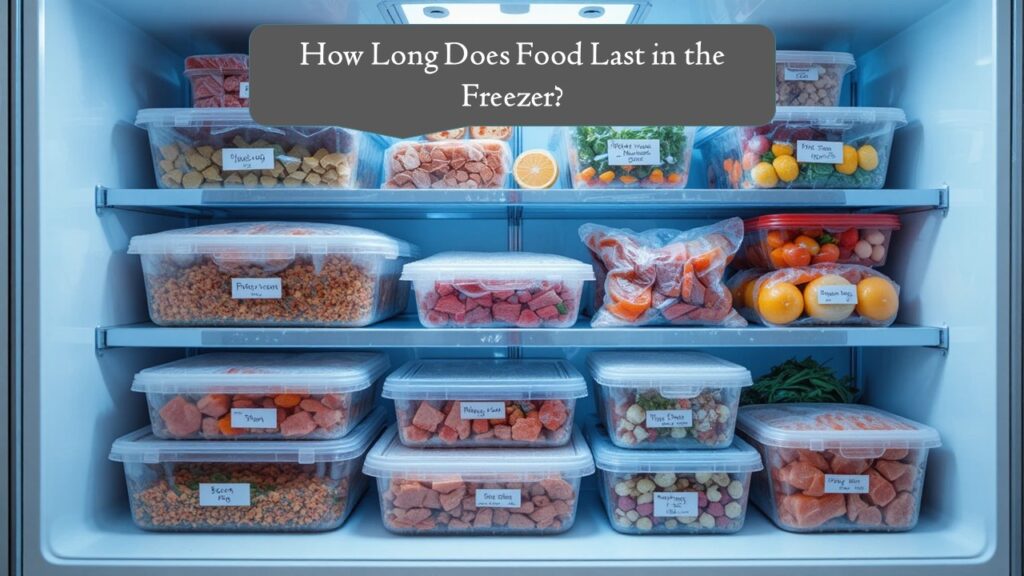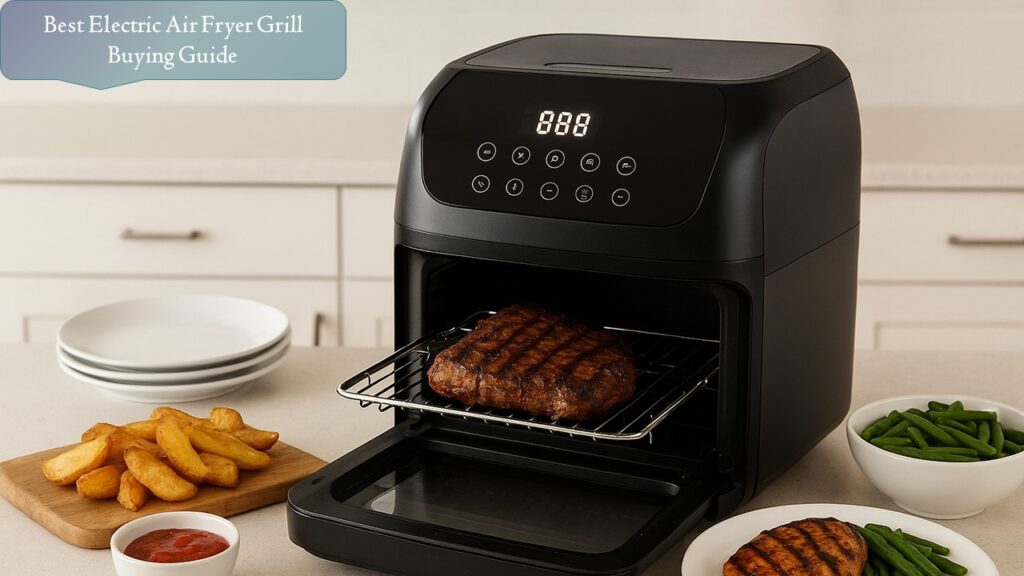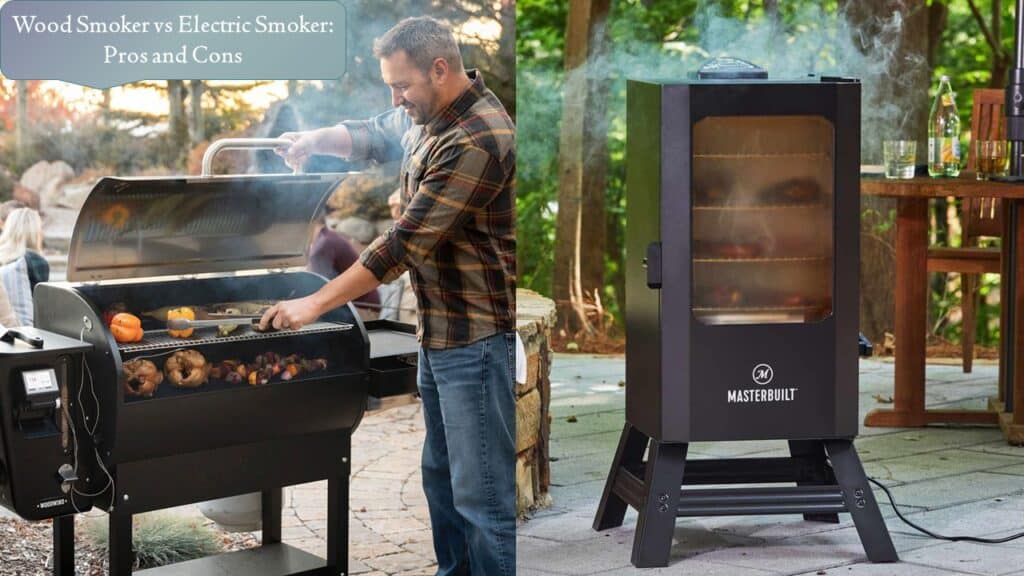Freezing food is one of the simplest and most effective ways to preserve it, but have you ever found a mysterious container buried deep in your freezer and wondered, “Is this still safe to eat?” You’re not alone.
While freezing can dramatically extend food’s shelf life, it doesn’t keep it fresh forever. Over time, texture, flavor, and even nutritional value can decline — even if the food technically remains safe.
In this guide, we’ll break down how long different foods last in the freezer, how to store them properly, and how to tell when it’s time to toss them. By the end, you’ll know exactly what to keep, what to use soon, and what to let go of.
Why Freezing Works?
Freezing food slows down the growth of bacteria, mold, and yeast by lowering the temperature to 0°F (-18°C) or below. At that temperature, microorganisms can’t grow, and enzyme activity that causes spoilage is drastically reduced.
However, freezing doesn’t kill bacteria — it just puts them on pause. That means if food was spoiled before freezing, it’ll still be spoiled when thawed. Proper preparation and storage are key to maintaining food quality.
How Long Food Lasts in the Freezer (General Overview)
Here’s a quick summary before we dive into specifics:
| Food Category | Freezer Life (at 0°F / -18°C) |
| Raw Meat (Beef, Pork, Lamb) | 6–12 months |
| Poultry (Chicken, Turkey) | 9–12 months |
| Ground Meat | 3–4 months |
| Cooked Meat | 2–3 months |
| Fish & Seafood | 3–6 months |
| Fruits | 8–12 months |
| Vegetables | 8–12 months |
| Bread & Baked Goods | 2–3 months |
| Soups & Stews | 2–3 months |
| Leftovers | 2–6 months |
| Ice Cream | 2–3 months |
| Frozen Meals | 3–6 months |
Keep in mind that these are quality guidelines. Most frozen food remains safe beyond these times — it just may not taste as good.
How Long Meat and Poultry Last in the Freezer
-
Raw Meat
- Beef, pork, and lamb cuts (like steaks, chops, and roasts):
Last up to 12 months in the freezer.
Wrap them tightly in freezer paper or vacuum seal to avoid freezer burn. - Ground meats:
Since ground meat has more exposed surface area, it’s best used within 3–4 months for top flavor and texture.
-
Poultry
- Whole chicken or turkey: Up to 1 year.
- Chicken parts (breasts, thighs, wings): About 9 months.
- Ground poultry: Around 3 months.
Pro Tip: Label each package with the date before freezing. It’s easy to forget when you put it in there!
How Long Fish and Seafood Last in the Freezer
Fish can stay good for a surprisingly long time — as long as it’s stored properly.
- Fatty fish (like salmon, mackerel, or trout): 2–3 months.
- Lean fish (like cod, tilapia, or haddock): 6 months.
- Shellfish and shrimp: 3–6 months.
Store fish in airtight bags with as little air as possible. Freezer burn is the enemy here, especially with delicate seafood.
How Long Fruits and Vegetables Last in the Freezer
-
Fruits
Fruits generally keep their flavor and texture for 8–12 months when properly frozen.
To maintain quality:
- Wash, dry, and slice before freezing.
- Store in sealed containers or heavy-duty freezer bags.
Berries, mangoes, peaches, and bananas all freeze beautifully and are perfect for smoothies later.
-
Vegetables
Most vegetables last 8–12 months, but blanching (briefly boiling, then cooling) before freezing helps lock in color, flavor, and nutrients.
Some vegetables that freeze well:
- Broccoli, cauliflower, green beans, spinach, carrots, and peas.
Avoid freezing high-water veggies like cucumbers and lettuce — they turn mushy when thawed.
How Long Cooked Foods, Leftovers & Meals Last in the Freezer
-
Cooked Meats
Cooked chicken, beef, or pork lasts about 2–3 months in the freezer. Wrap portions individually for easier thawing.
-
Soups and Stews
Freeze soups and stews for 2–3 months, leaving a little headspace in the container (liquids expand as they freeze).
Avoid freezing dairy-heavy soups — milk and cream can separate upon thawing.
-
Casseroles and Cooked Pasta
- Casseroles: 2–3 months
- Cooked pasta: 1–2 months
Cook pasta al dente before freezing so it doesn’t turn mushy later.
-
Leftovers
In general, leftovers stay good for 2–6 months, depending on what’s in them.
Label containers with both the date and contents — future you will thank you!
How Long Bread, Baked Goods, and Dairy Last in the Freezer
-
Bread & Baked Goods
Bread, muffins, and cakes freeze well for 2–3 months if wrapped tightly.
Wrap in plastic, then foil to prevent freezer burn and maintain texture.
-
Butter & Cheese
- Butter: Up to 9 months.
- Hard cheeses: Around 6 months (soft cheeses don’t freeze well).
-
Milk & Cream
Milk can be frozen for 1–2 months, but expect slight texture changes. Shake well after thawing.
How to Freeze Food Properly for Maximum Freshness
To make sure your frozen food tastes just as good months later, proper storage is key.
-
Use Airtight Containers or Freezer Bags
Air is the enemy of freshness. Squeeze out as much air as possible before sealing.
-
Label Everything
Always include:
- The date
- The name of the food
- Optional: Cooking instructions for ready-to-eat meals
-
Maintain a Consistent Temperature
Keep your freezer at 0°F (-18°C) or below.
Avoid frequent door openings — temperature fluctuations can affect texture and flavor.
-
Organize by Category
Group meats, veggies, fruits, and meals together so you can use the oldest items first.
How to Spot Freezer Burn (and What to Do About It)
Freezer burn occurs when food gets dehydrated due to air exposure. It shows up as grayish-white patches or tough, dry spots.
While freezer-burned food is still safe to eat, it might taste dry or bland. You can usually trim away affected areas and cook the rest.
To prevent it:
- Use vacuum sealers if possible.
- Wrap foods tightly with plastic and foil.
- Avoid long-term storage beyond recommended times.
Tips for Thawing Frozen Food Safely
Thawing the right way is just as important as freezing.
- In the Refrigerator (Best Method):
Slow and safe. Most foods thaw in 12–24 hours. - In Cold Water:
Submerge sealed food in cold water and change the water every 30 minutes. - In the Microwave:
Fast but can partially cook food. Use only if you’ll cook immediately after thawing.
Never thaw food at room temperature — bacteria multiply quickly once food hits 40°F (4°C).
Common Freezer Storage Mistakes to Avoid
- Overpacking the freezer: Air needs to circulate to keep temperature even.
- Not labeling items: Leads to mystery meals and wasted food.
- Freezing hot food: Always cool first; hot food can raise freezer temperature and affect nearby items.
- Skipping airtight wrapping: Causes freezer burn and loss of flavor.
- Ignoring rotation: Use older food first (FIFO — First In, First Out).
Conclusion:
Your freezer is one of the most powerful tools for reducing food waste, saving money, and keeping meals ready at your convenience. But even frozen foods have a shelf life — the trick is knowing how long they last and how to store them properly.
By keeping your freezer organized, labeling everything, and using airtight packaging, you can ensure that every frozen meal, cut of meat, or bag of fruit tastes just as good as the day you stored it. So go ahead — freeze with confidence, and make the most of your kitchen’s coldest corner.







